The burden of wearing glasses or contact lenses is a complaint that many individuals have. With increased popularity and more people aware of the option of refractive surgery, many are looking into what ways they have to permanently correct their blurry vision. There are a variety of solid procedures that can be completed and navigating the pros and cons of each can be daunting and confusing.
Before we dive into the different options, it is important to keep in mind that unfortunately not everyone is a good candidate for these procedures. It is important to inquire with our optometrist about what is right for you. It is also important to keep in mind that the objective of refractive surgery is simply to decrease your dependency on glasses and a successful result does not necessarily mean that you are guaranteed superhuman vision.
LASIK
Often the most talked about refractive procedure today, LASIK (Laser-Assisted In Situ Keratomileusis) is a quick procedure that helps to correct both near and farsightedness along with astigmatism. The procedure involves cutting and opening a flap at the front of the cornea (the front surface of the eye). The laser then removes a specific portion or thickness of tissue within the cornea and the flap is then closed overtop.
This procedure is very quick, with the laser only operating for less than a minute. One big benefit of LASIK is the quick healing time. It is often the case that your vision will be improved upon leaving the office and pain is low. The disadvantage to this procedure is the fact that a flap must be created, as there is potential for it to reopen at a later date due to trauma.
SMILE
Another procedure that has the same benefit of quick recovery time is SMILE (small incision lenticule extraction). This is also a laser refractive surgery and is newer than LASIK. The laser works on the inner cornea and no flap is needed for this procedure. A small disc is carved out from the cornea and removed via a small opening made at the side, also through the use of the laser. Risk of complications are similar between SMILE and LASIK.
PRK
PRK (photo-refractive keratectomy) is another laser procedure that is often a good option for those that are not candidates for the other two laser refractive surgeries. This could be due to the prescription, or the thickness and health of the cornea. Rather than a flap, the top layer of the cornea is brushed off, leaving the inner layers of the cornea exposed and ready to be carved out with the laser.
The healing time for PRK is longer and more painful than LASIK, ranging from two to three weeks for vision to be fully recovered. After recovery, there is the added benefit of not having a flap that has the potential to be dislodged.
Implantable Collamer Lens
Implantable collamer lenses (ICL) are a great option for patients with high prescriptions that have limited success with the laser procedures mentioned above and are not yet due for cataract surgery. This procedure involves an incision being made at the side of the cornea where the lens is implanted into the eye, resting just behind the colored part of the eye or even within the cornea itself. The lens has the prescription that is needed to correct for blurry vision.
Clear Lens Exchange
Cataract surgery is a procedure that replaces the lens in the eye when it is too cloudy to see through. This change naturally occurs with age and this is a common procedure completed today. During cataract surgery, the surgeon will replace the lens in the eye with an artificial intraocular lens that sits just behind the colored part of the eye.
This lens can have your prescription but is such that you will no longer need glasses after the surgery to see clearly in the distance. If a multifocal intraocular lens is used, you will not need glasses to see up close either, but you will need readers if a monofocal lens is used.
A clear lens exchange refers to the same surgery as replacing a cataract except for the fact that the patient’s cataract has not progressed enough to require the surgery at the time. Although the patient may still be seeing well, they may elect to have the cataract surgery early and replace the lens in the eye so that they can be glasses free.
Our eye doctors at EyeDocs Family Eye Care in Brookville, OH excel in prescription of glasses, contact lenses and the diagnosis of a variety of eye disese. Call our optometrists at 937-770-1265 or schedule an eye exam appointment online if you would like to be evaluated for your refractive surgery options. Our eye doctors, Dr. Kyle Maxam and Dr. Cara Wampler, provide the highest quality optometry services and eye exams in Brookville, Ohio.
You can schedule your next appointment with us online!
Connect With Us
Let’s continue the conversation over on your social network of choice.
facebooktwitterinstagram
Useful Links
Our Services
Useful Links
Our Services
430 Arlington Rd. Suite B | Brookville, OH 45309 | 937-770-1265


0 Comments